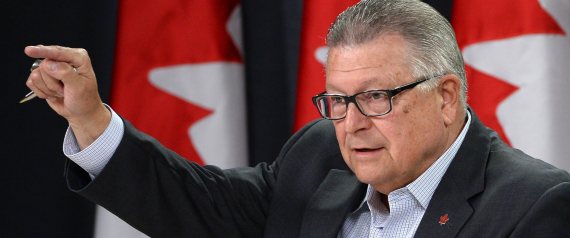It was almost a year ago that the United States and Canada signed a new agreement on managing our long shared border. U.S. Secretary of Homeland Security Jeh Johnson and then Public Safety Minister Steven Blaney signed in March 2015 what is known as the Agreement on Land, Rail, Marine and Air Transport Preclearance, an innovative mutual understanding between the two governments which many anticipated would produce significant benefits for Canada and the United States.
Shared Border, Shared Economy
Newly minted Public Safety Minister Ralph Goodale will be traveling to Washington soon to meet with his American counterpart. The opportunity will be ideal to raise the issue of the agreement and plan out the next steps forward. After all, considering both nations share the world’s longest international border and how much our values, histories and economies are intertwined, it only seems right that both governments would progress on fully realizing the legal framework signed last year.
Streamlining Border Crossings
Delays at the Canada-United States border are well known (and hated) by seasoned travelers heading north or south. All that wait time isn’t just irritating it’s also expensive and plays onto the efficiency and competitiveness of our economic model. That’s why the 2015 Preclearance agreement is all that important: its aims to reduce delays at the borders by allowing customs, immigration, and agriculture inspections required for entry on foreign soil. The result would be more predictable and efficient border crossings for travel, transportation and tourism.
Airport Experience
“This historic new agreement builds on decades of successful preclearance operations in Canadian airports. It will enhance the security at our border and create jobs and growth in Canada by improving the flow of legitimate goods and people between our two countries” mentioned Public Safety Minister Steven Blaney when signing the agreement in 2015.
Air travelers know how convenient it is to be able to clear customs before departure. Taking that same concept and applying it to land, sea and rail border crossings should give you an idea of how potentially interesting and meaningful the agreement could impact both sides of the border.
Through the 2015 agreement, officials on both sides of the border will be better equipped to conduct their border security, inspection and facilitation processes on their respective territories. This will allow the Canadian and American legislators to build up on their commitments to ensure a more secured North American space and at the same time, boost each other’s access to markets and a mobile labor force; clear steps that will have a direct and positive impact on our combined economies.

Border Quick Facts
- The first air transport preclearance agreement between Canada and the United States came into force in 1974 although U.S. preclearance officers had been screening travelers for U.S.-bound planes at the Toronto International Airport since 1952.
- Approximately 11 million passengers are pre-cleared for flights to the U.S. at eight Canadian airports under the current preclearance framework.
- The 2015 agreement ensure a consistent approach in all preclearance activities, regardless of the mode of transportation chosen, making it easier to implement and govern preclearance activities on both sides of the border.
- In 2011 President Obama and Prime Minister Harper released the Beyond the Border Declaration which articulates the shared vision in which Canada and the U.S. work together to address threats at the earliest moment possible while facilitating the legitimate movement of people, goods and services across the shared border. The 2015 agreement was a key component of the Beyond the Border Action Plan.

 Payment
Payment  My Account
My Account